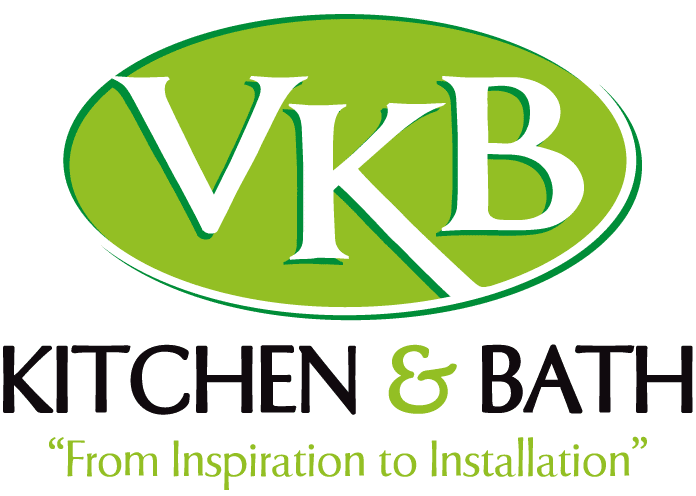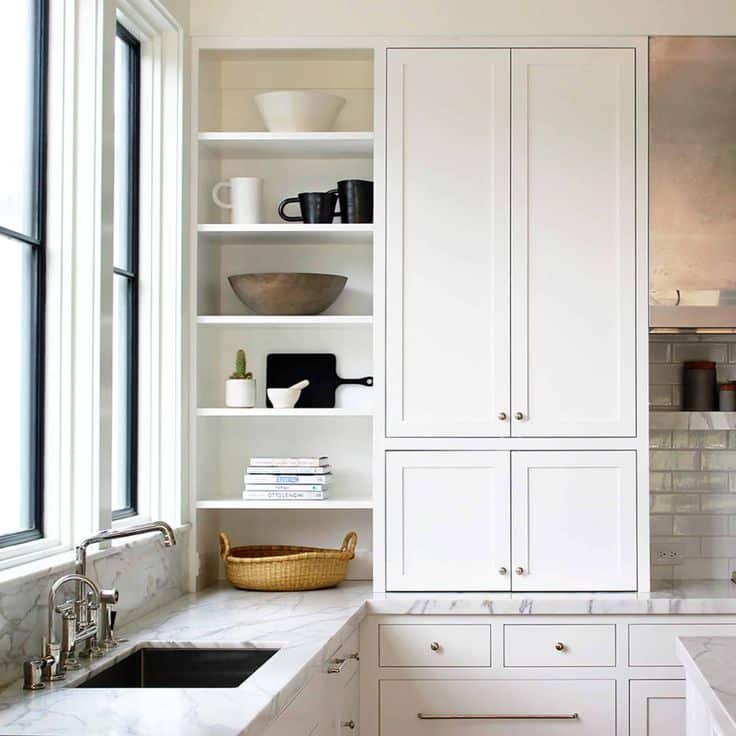Let’s face it, the kitchen is the heart of the home. It’s where we cook, eat, and often, entertain. But with all that activity comes mess. It can be a battle to keep your kitchen sparkling clean, especially if you’re juggling a busy family life. But don’t worry, I’ve got you covered. With a few simple tips and routines in these kitchen cleaning hacks, you can transform your kitchen from a chaotic mess to a clean and inviting space.
The Importance of a Maintaining a Clean Kitchen
A clean kitchen is more than just aesthetically pleasing. It’s also essential for hygiene and food safety. Bacteria can thrive in dirty environments, so keeping your kitchen clean is crucial for protecting your family’s health. Plus, a tidy kitchen can reduce stress and make meal prep more enjoyable.
Daily Cleaning Essentials – A “Must Have” List in Kitchen Cleaning Hacks
There are a few essential cleaning tools that you should always have on hand:
- All-purpose cleaner: This is a versatile product that can be used on most surfaces.
- Disinfectant cleaner: Use this on food preparation areas and high-touch surfaces.
- Glass cleaner: For keeping your windows, mirrors, and appliances sparkling.
- Microfiber cloths: These are gentle on surfaces and highly absorbent.
- Sponges and scrub brushes: For tackling tough messes.
- Rubber gloves: Protect your hands from harsh chemicals.
Tackling the Countertops
Your countertops are probably the most used surface in your kitchen, so it’s important to keep them clean and sanitized. Here are some tips:
- Wipe down after each use: This prevents food spills from drying and becoming harder to remove.
- Disinfect regularly: Use a disinfectant cleaner on your countertops, especially after handling raw meat or poultry.
- Avoid harsh chemicals: Some countertop materials are sensitive to harsh chemicals, so always check the manufacturer’s recommendations.
- Use cutting boards: Protect your countertops by using cutting boards when chopping or preparing food.
Appliance Care
Your kitchen appliances work hard for you, so it’s important to give them some love in return.
- Refrigerator: Clean the inside and outside regularly. Remove spills immediately and wipe down shelves with a mild disinfectant. Don’t forget to clean the coils at the back of the refrigerator.
- Oven: Regular cleaning prevents grease buildup. For spills, use an oven cleaner and follow the instructions carefully.
- Microwave: Wipe down the interior after each use. For tougher messes, use a mixture of water and vinegar.
- Dishwasher: Run a cleaning cycle with dishwasher cleaner to remove food residue and prevent odors.
Sink Serenity
The kitchen sink can be a breeding ground for germs, so it’s important to keep it clean.
- Wash dishes promptly: Don’t let dirty dishes pile up in the sink.
- Clean the sink daily: Wipe down the sink with an all-purpose cleaner to remove food particles and soap scum.
- Garbage disposal: Grind ice cubes and citrus peels to freshen the disposal and help remove odors.
Preventative Measures
Preventing messes is often easier than cleaning them up. Here are a few tips:
- Use oven liners: Protect your oven from spills and splatters.
- Cover pots and pans: This prevents grease and splatters from spreading.
- Wipe up spills immediately: The quicker you clean up a spill, the easier it will be to remove.
- Organize your pantry: A well-organized pantry makes it easier to find what you need and reduces clutter.
Deep Cleaning
In addition to daily cleaning, it’s important to schedule deep cleaning tasks. These tasks might include:
- Cleaning the inside of cabinets and drawers
- Washing windows
- Cleaning light fixtures
- Deep cleaning the oven
- Cleaning the refrigerator coils
| Task | Details |
|---|---|
| Cleaning the inside of cabinets and drawers | Remove everything: Take out all the contents of your cabinets and drawers. This will give you a clear view of the space and allow you to clean all surfaces thoroughly. Wipe down surfaces: Use a damp microfiber cloth with a solution of warm water and all-purpose cleaner to wipe down the cabinet walls, shelves, and drawers. Pay attention to corners and crevices, where crumbs and dirt tend to accumulate. Clean spills and stains: For tougher messes like grease or sticky spills, you may need to use a stronger cleaning solution. Be sure to check the manufacturer’s recommendations for cleaning your specific cabinet material. Vacuum or sweep floors: Use a vacuum cleaner or broom to remove any crumbs or dirt from the cabinet and drawer floors. Replace liners (optional): If your cabinets and drawers have liners, consider replacing them if they are stained, ripped, or worn. Fresh liners will help to keep your cabinets clean and organized. |
| Washing windows | Gather your supplies: You’ll need a bucket, microfiber cloths, a squeegee, and a window cleaning solution (or a mixture of white vinegar and water). Pre-clean the window frames: Wipe down the window frames with a damp microfiber cloth to remove any dust or cobwebs. Wash the windows: Apply your cleaning solution to the window pane using a microfiber cloth. Work in small sections and wipe in a circular motion. Squeegee the blade: Use a squeegee to remove excess cleaning solution and water from the window pane, working from top to bottom and wiping in even strokes. Buff the windows dry: Use a clean, dry microfiber cloth to buff the window pane dry and remove any streaks. |
| Cleaning light fixtures | Turn off the power and remove bulbs: Before cleaning any light fixture, be sure to turn off the power at the breaker box. This will help to prevent electrical shock. Dust the fixture: Use a microfiber cloth or duster to remove any dust from the light fixture. Clean the fixture: Depending on the type of light fixture, you may be able to wipe it down with a damp microfiber cloth. For more delicate fixtures, you may need to use a special cleaning solution. Be sure to check the manufacturer’s recommendations for cleaning your specific fixture. Replace bulbs (optional): If the bulbs in your light fixtures are burned out, dim, or flickering, take this opportunity to replace them. Turn the power back on: Once you have finished cleaning the light fixture, turn the power back on at the breaker box. |
| Deep cleaning the oven | Gather your supplies: You’ll need oven cleaner, a heavy-duty oven mitt, a trash bag, a scrub brush, and a sponge. Prepare the oven: Remove any racks or trays from the oven. If possible, take them outside to clean them. Apply oven cleaner: Following the instructions on the label, apply oven cleaner to the inside surfaces of the oven. Be sure to coat all greasy areas, but avoid applying cleaner to any rubber gaskets or heating elements. Let the cleaner sit: Close the oven door and let the cleaner sit for the amount of time recommended on the label. This will allow the cleaner to break down grease and grime. Scrub the oven: Once the cleaning time is complete, open the oven door (wearing your oven mitt) and scrub the interior surfaces with a wet sponge or scrub brush. Be sure to pay attention to corners and crevices, where grease tends to accumulate. Rinse and wipe down: Rinse the oven surfaces with clean water and then wipe them down with a damp microfiber cloth to remove any residue. Clean the oven racks/trays: If you removed the oven racks and trays, soak them in a sink filled with hot, soapy water. You can also scrub them with a baking soda paste to remove tough grime. Clean the oven door: Don’t forget to clean the inside of the oven door! You can use the same oven cleaner and scrubbing method that you used for the inside of the oven. |
| Cleaning the refrigerator coils | Locate the coils: The refrigerator coils are typically located on the back of the refrigerator, near the bottom. Vacuum the coils: Use a vacuum cleaner with a hose attachment to remove any dust, dirt, or cobwebs from the coils. Brush the coils (optional): If you can safely reach the coils, you can also brush them with a soft-bristled brush to remove any stubborn dirt or debris. Be careful not to bend or damage the coils. |
There you have it! With these simple tips and tricks, you can transform your kitchen into a clean and inviting space that promotes good health and makes cooking a joy. Remember, consistency is key. By incorporating these habits into your daily routine, you’ll spend less time cleaning and more time enjoying your beautiful kitchen.
Now, if your dream kitchen needs a complete makeover, not just a cleaning routine, look no further than VKB Kitchen & Bath! We specialize in creating stunning and functional kitchens that cater to your specific needs and lifestyle. From design consultations to flawless installation, our team of experts will guide you through every step of the process.
Visit our website here to explore our portfolio and schedule a free consultation today. Let’s turn your kitchen cleaning woes into culinary creations!
Frequently Asked Questions
Q1: How often should I clean my kitchen?
It’s a good idea to do a quick clean every day, like wiping down counters and washing dishes. A deeper clean, like scrubbing appliances and mopping floors, can be done once a week.
Q2: What’s the best way to keep my kitchen sink fresh?
To keep your sink fresh, wash dishes right away and wipe down the sink daily. You can also grind ice cubes and citrus peels in the garbage disposal to help with odors.
Q3: How do I clean greasy stove tops?
For greasy stove tops, use a mix of dish soap and warm water. Scrub with a sponge or brush, and for tough spots, let the soapy water sit for a few minutes before wiping.
Q4: What should I do if I spill something in the oven?
If you spill something in the oven, it’s best to clean it right away. Use an oven cleaner or a mix of baking soda and water. Apply it to the spill, let it sit, then scrub gently.
Q5: How can I organize my kitchen to keep it cleaner?
Organize your kitchen by keeping frequently used items within easy reach and storing less-used items out of the way. Use drawer dividers and pantry organizers to reduce clutter.



